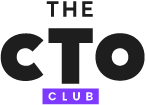On the 24th anniversary of the Agile Manifesto, it's evident that while Agile practices have permeated many organizations, way too many are still missing the mark.
One real problem with Agile isn’t the framework—it’s the culture gap. Too many companies check the Agile boxes but completely miss the mindset shift that makes Agile work. When teams go through the motions, they end up with all the Agile rituals and none of the results.
A McKinsey study highlights that cultural challenges are more than twice as common as other top obstacles in agile transformations. This underscores that without a fundamental cultural shift, adopting agile practices may lead to failure.
Real Agile happens when trust, adaptability, and continuous improvement aren’t just things you talk about—they’re how work actually gets done. I’ll share how you can cultivate a genuine Agile culture that delivers tangible results and keeps the workplace adaptable.
Doing Agile vs. Being Agile
You see your team diligently conducting sprints, holding daily stand-ups, and managing backlogs, but despite these efforts, they find themselves mired in the same inefficiencies and frustrations as before. What’s the reason? They're doing Agile without truly being Agile.

"If you’ve ever seen the parkour scene from The Office, it might remind you of a team’s first attempt at agility. As Michael Scott and his parkour-aspiring colleagues show, it’s one thing to simply mirror principles. But being able to quickly and effectively pivot and adapt priorities based on real-time feedback and need is an entirely different – and much more challenging – matter.
Teams have been working with components of Agile since the Manifesto for Agile Software Development was introduced. By now, most organizations have taken steps toward team agility – even if (as in the example above) they are just throwing out terms like scrum, Kanban, and sprints." -Sara Eaton, Managing Director, Slalom
Adopting Agile rituals without internalizing the principles that underpin the methodology is ineffective. Too many teams treat Agile as a shield from uncertainty instead of a way to systematically navigate it.
“When teams confront uncertainty head-on, they can manage it more effectively. It might seem like uncertainty is increasing, but in reality, it's being steadily decreased and made more visible.” - Noah Cantor, Tech Leadership Coach
Teams that don’t understand this mistake Agile for chaos and revert to rigid planning, missing the entire point.
So, how can you be agile?
- People Over Tools (Seriously, it’s in the Manifesto) – If your team’s first instinct when facing a roadblock is to wrestle with Jira instead of having a five-minute conversation, something’s off. Agile thrives on human interaction. Tools help, but they should never be a crutch. Get people talking, problem-solving together, and collaborating in real time.
- Make Agile Work for You (Not the Other Way Around) – Don’t force-fit your team into a rigid Agile framework just because a consultant said so. If daily standups feel like a waste of time, tweak them. If two-week sprints are too short for meaningful progress, adjust. The best Agile teams don’t blindly follow the rulebook—they make the rules work for them.
Agile works when it’s lived, not just performed. Focus on the fundamentals, cut what doesn’t serve your team, and build a culture that makes agility second nature.
-

Docker
Visit WebsiteThis is an aggregated rating for this tool including ratings from Crozdesk users and ratings from other sites.4.6 -

Pulumi
Visit WebsiteThis is an aggregated rating for this tool including ratings from Crozdesk users and ratings from other sites.4.8 -

GitHub Actions
Visit Website
Cargo Cult Agile
During World War II, some Melanesian islanders observed military personnel receiving abundant supplies via air and sea. After the war, hoping to attract similar deliveries, they built imitation airstrips and performed rituals mimicking the soldiers, believing these actions would bring them goods. This led to the term "cargo cult," describing the practice of replicating behaviors without understanding the underlying principles, hoping to achieve the same results.
"Cargo Cult Agile" describes organizations that adopt Agile in name only. They rebrand roles and rename phases to sound Agile but continue with their old processes. This superficial change focuses on appearances rather than embracing Agile's core principles, so implementations are ineffective.
At its core, Agile is about more than processes. Organizations must build a culture where teams have the freedom to make decisions, trust each other, and are constantly on the lookout for ways to get better.
Leadership's Role in Cultural Transformation
Another big roadblock to real Agile adoption is old-school hierarchy. Teams are told to be flexible, self-organizing, and empowered—but leadership still clings to top-down control, slow decision-making, and layers of approvals.
A cultural clash like this strangles agility before it even has a chance to work. If leadership isn’t willing to adapt, no amount of sprints or stand-ups will make a company truly Agile.
And it’s not just about control—it’s about comfort. Agile methods feel unfamiliar, and that triggers resistance. As Tech Leadership Coach Noah Cantor puts it, “Adopting agile methods, which are new and different, triggers discomfort due to our preference for the familiar. That often manifests in rose-tinted reflections on the past, where we romanticize what came before precisely because it contrasts with what’s happening now.”
This nostalgia for the "good old days" of Waterfall—or whatever came before—leads leadership to default to familiar structures rather than fully embrace Agile. That’s why many companies end up with half-baked Agile, where teams are told to “move fast” but still have to wait weeks for approval to deploy.
This hampers performance and leads to burnout, frustration, and zero real progress.
Leadership, meanwhile, starts side-eyeing Agile as the culprit, wondering why productivity isn’t skyrocketing and why their “Agile transformation” hasn’t magically turned them into a high-performing machine. Organizations may conclude that "Agile doesn't work," when in reality, it was never truly adopted.
If leaders want Agile to work, they must get uncomfortable—letting go of outdated control structures, empowering teams, and embracing Agile as more than a process change. It’s a mindset shift, and it starts at the top.
Encourage people to work on things they don’t understand and pull skills and knowledge from those who do. When they admit they don’t know something, thank them. When something goes wrong, treat it as an opportunity to learn and grow, not a time to blame. In every way, encourage people to be more open, trusting, and vulnerable.
Noah Cantor, Tech Leadership Coach
Want to transform rituals into results? Do these four things:
- Get Out of Your Team’s Way: Teams that feel in control of their work will always outperform those that feel like they’re just following orders. Trust them to make decisions, let them experiment, and understand that mistakes are part of the process—not something to punish. And it can’t just be a team-level change. If leadership doesn’t understand and support Agile, teams are stuck playing a rigged game. Clear roadblocks, trust your teams, and live Agile values (empowering teams instead of controlling them).
- Talk Like Humans, Not Just in Meetings: When you have retros, are people going through the motions without saying what’s actually broken? Do people feel safe calling out problems? If not, Agile is dead before it even starts. If feedback only happens in retros and nothing changes, people stop speaking up. The best Agile teams thrive on constant, unfiltered feedback—from leadership, between teams, and straight from customers. The faster you surface issues, the faster you can fix them.
- Make Learning a Non-Negotiable: Agile is about evolving, and that means your team has to be learning constantly. Give them time for workshops, reading, or upskilling. Block time for it! Encourage knowledge-sharing across teams. The best Agile teams aren’t just shipping features—they’re getting better every sprint.
- Stop Chasing Metrics (Instead, Chase Value): If your team is hitting sprint goals but your product still feels like a mess, you’re measuring the wrong things. Make sure everyone understands the bigger picture—not just the Jira tickets in front of them. What is your company’s structure built for? Waterfall? If so, Agile rituals won’t save you. Flatten hierarchies, remove bottlenecks, and let teams move fast. Rethink how work gets done. If a feature doesn’t serve the customer or the business, why are you building it?
20 years on, and I’m still having conversations with finance, marketing, and sales teams asking, ‘What is this Agile thing?’ We should have tackled these challenges earlier—but we didn’t know what they were. Technology isn’t standing still, and yet, too many companies treat Agile as a ‘set-it-and-forget-it’ framework. Well, guess what? If your ways of working don’t evolve with technology, you’re setting yourself up for failure.
Agile and AI (Don’t Let the Hype Kill the Fundamentals)
In the mad dash to embrace AI, a lot of companies are completely missing the point of Agile. The Agile Manifesto literally starts with “individuals and interactions over processes and tools,” but AI adoption right now? It’s all about the tools—chatbots, automation, fancy dashboards—while ignoring the people actually doing the work and the problems they’re trying to solve.
This obsession with AI-as-a-magic-bullet is why so many AI projects flop—teams get dazzled by tech but fail to integrate it in a way that actually improves collaboration, adaptability, or delivery. AI can’t fix bad processes; it just makes broken workflows faster.
And now, some teams are even experimenting with AI to guide Agile rituals—like using generative AI to suggest questions for retros. Cool in theory, but let’s be real: AI can’t replace an Agile coach. It doesn’t have the human judgment, experience, or emotional intelligence to read the room and adapt on the fly. AI can facilitate, but it can’t lead.
If AI is going to be part of your Agile stack, use it to amplify, not replace, human collaboration. Automate the grunt work, sure. Use it to surface insights, absolutely. But don’t let the tech become the focus—Agile works because of the people behind it, not because of the tools they use.
Agile Works When You Commit
Agile is a mindset and a culture shift, and like any real transformation, it takes work. If Agile isn’t delivering results for your team, don’t play the blame game. It’s unlikely Agile is broken, and more likely you’re doing Agile instead of being Agile.
As with most things in life, authenticity is key. Drop the theater and embrace the principles. The culture gap is the real Agile killer—not the framework itself. Fix that, and everything else falls into place.
Subscribe to The CTO Club’s newsletter for more Agile insights and tools.








